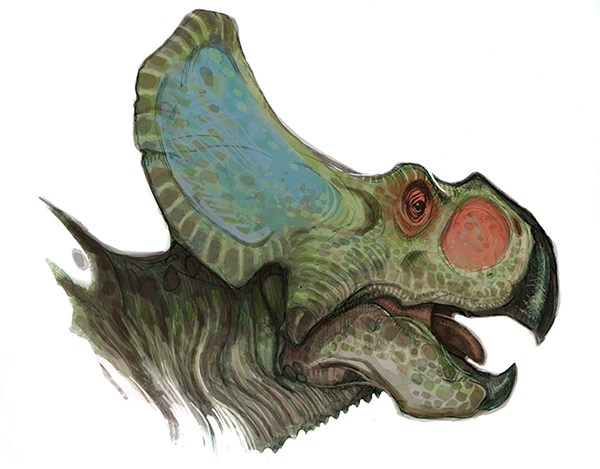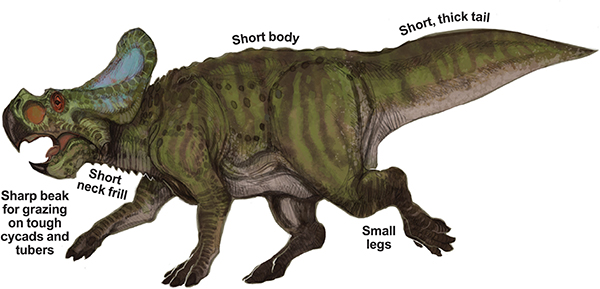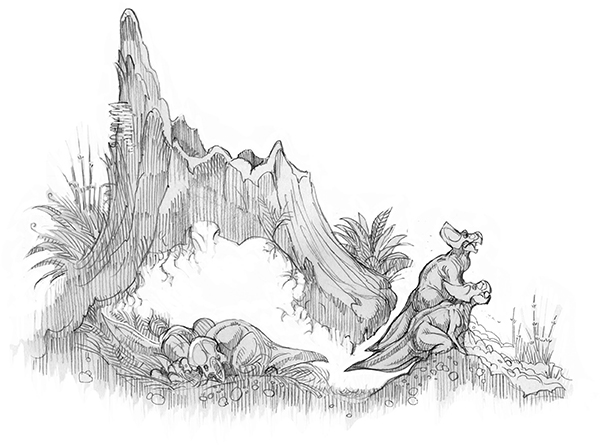

PRONUNCIATION | PROH-toh-SERR-a-tops
SPECIES | Protoceratops andrewsi
NAME | First Horned Face
FAMILY | Protoceratopsidae
PERIOD | Cretaceous
DIET | Herbivore
SIZE | 6 feet (2m)
YEAR DISCOVERED | 1923
Protoceratops was a small quadrupedal dinosaur from the Cretaceous period. Related to the triceratops, protoceratops possessed similar traits such as the neck frill and beaked mouth, but did not have the impressive horns or size as other species of Ceratopsidae. This herbivore was thought to live in large communities of hundreds of animals congregating within close proximity to one another.
Fossil remains have shown that protoceratops was hunted by velociraptor. The small protoceratops would only have been able to protect their young from such dangerous foe by hiding them in protective herds, nests and burrows.

Like other Ceratopsidae, protoceratops possessed a neck frill. Unlike triceratops or styracosaurus, the frill was small and without horns, suggesting that its function was ornamental.

Fossil remains of protoceratops have been abundant, making them one of the more common dinosaurs, and one of the earliest, hence their name “First Horned Face.” Remains of protoceratops of all ages—from egg and hatchling to young and into adulthood—have all been discovered together.


Like today’s rabbits, groundhogs, turtles and even birds, it is reasonable to imagine that the small and social protoceratops and its cousin microceratus (see sidebar) burrowed to survive harsh climates. The fossil record demonstrates that these animals lived in close proximity to one another at all ages of their lives. Recent paleontological discoveries have shown that dino burrows did exist.
Closely related to its cousin protoceratops, the diminutive microceratus had a long tail and strong back legs, suggesting it ran nimbly on its hind legs. Easy prey to the velociraptors and other predators in the bush, microceratus may have burrowed or hid in tight spaces to evade capture.

Microceratus gobiensis
Length 2 feet (60cm)